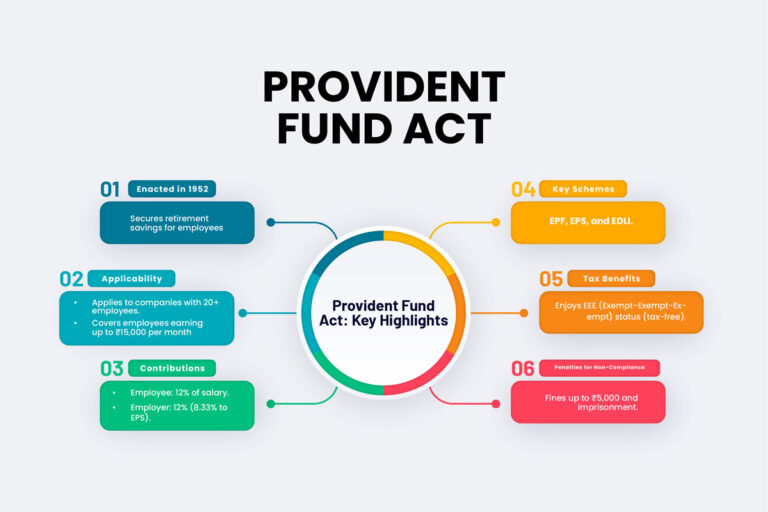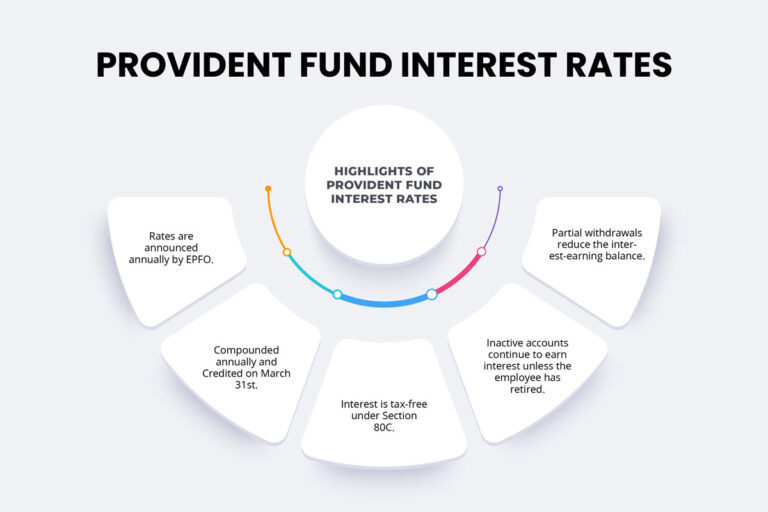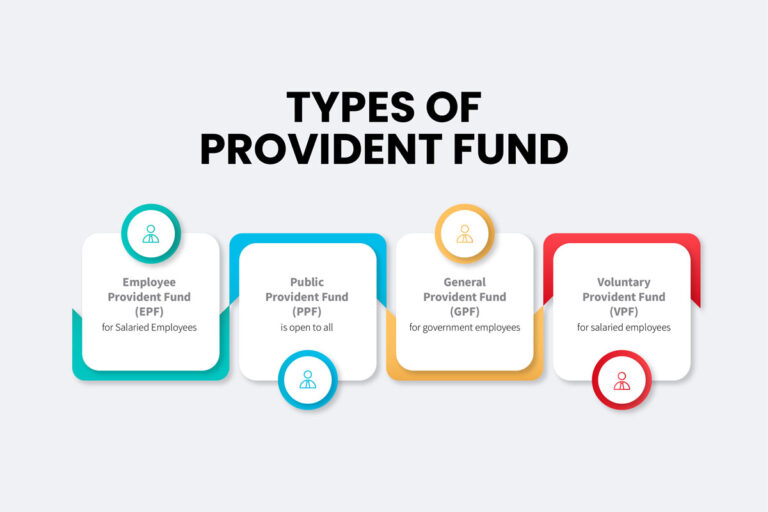Some individuals still need clarification on the Provident Fund (PF) and the Public Provident Fund (PPF) when planning retirement. They are both the most popular options in India if you want to invest in secure options comparatively. Both offer long-term savings opportunities with government backing, but they cater to different types of investors, have varying benefits, and suit different financial goals. Understanding the differences between PF and PPF is crucial for making the best choice for your future.
The Provident Fund (PF) and Public Provident Fund (PPF) are designed to help individuals build a corpus for their retirement. While PF is mandatory for salaried employees in companies registered with the Employees’ Provident Fund Organisation (EPFO), PPF is a voluntary investment option available to all Indian citizens. Choosing the right retirement savings plan depends on your employment status, risk tolerance, and financial goals.
Let’s examine PF vs. PPF in more detail to understand how they work and which suits you.
What is PF (Provident Fund)?
The Employee Provident Fund is a mandatory savings scheme for salaried employees working in companies registered under the Employees’ Provident Fund and Miscellaneous Provisions Act of 1952. The employee and employer contribute a percentage of the employee’s salary to the PF account. The accumulated amount and interest are payable to the employee at retirement or in certain specified circumstances.
Key Features of PF:
- Contribution: The employee and employer contribute 12% of the employee’s basic salary and dearness allowance. Of the employer’s contribution, 8.33% goes to the Employees’ Pension Scheme (EPS), and 3.67% goes to the EPF.
- Interest Rate: The current EPF interest rate is 8.25% for the financial year 2023-24, as approved by The Union Finance Ministry and declared by the EPFO in July 2024.
- Eligibility: Mandatory for salaried employees working in companies with 20 or more employees.
- Maturity: Full withdrawal is permitted at retirement or after two months of unemployment.
Benefits of PF for Salaried Employees:
- Employer Contribution: Employers match the employee’s contribution, doubling the savings.
- Higher Interest Rates: The EPF interest rate is generally higher than most fixed deposits and savings accounts.
- Tax Benefits: Contributions to Provident Fund are eligible for tax deductions under Section 80C of the Income Tax Act. The interest earned is tax-free if the employee completes five years of continuous service.
What is PPF (Public Provident Fund)?
Overview of the Public Provident Fund (PPF)
The Public Provident Fund (PPF) is a voluntary long-term savings scheme introduced by the government in 1968. It is available to all Indian citizens, including self-employed individuals and non-salaried professionals. PPF is ideal for individuals looking for a safe investment option with guaranteed returns.
Key Features of PPF:
- Contribution: The minimum annual contribution is ₹500, and the maximum is ₹1.5 lakh.
- Interest Rate: The PPF interest rate is currently 7.1% (for the second quarter of financial year 2024-25), and the government revises it quarterly.
- Eligibility: It is available to all Indian citizens. NRIs cannot open a PPF account but can maintain one if they have one before becoming NRIs.
- Maturity Period: The PPF has a lock-in period of 15 years and can be extended in blocks of 5 years after maturity.
Benefits of PPF for Self-Employed Individuals and Non-Salaried Professionals:
- No Employer Requirement: Since PPF is not tied to employment, anyone can open and contribute to a PPF account.
- Risk-Free Returns: As a government-backed scheme, PPF offers guaranteed returns with no risk of losing the principal.
- Tax-Free: The PPF enjoys EEE (Exempt-Exempt-Exempt) status, meaning contributions, interest, and withdrawals are all tax-free under Section 80C of the Income Tax Act.
PF vs PPF – Key Differences
When comparing PF and PPF, several key factors include eligibility, contribution limits, interest rates, withdrawal rules, and tax benefits. Here’s a breakdown of the major differences:
1. Eligibility and Target Audience
- EPF (PF): Mandatory for salaried employees working in companies with 20 or more employees.
- PPF: Voluntary and available to all Indian citizens, including self-employed individuals and non-salaried professionals.
2. Contribution Structure and Limits
- EPF: Employee contributes 12% of their basic salary and dearness allowance, with a matching contribution from the employer.
- PPF: Minimum contribution of ₹500 per year and maximum ₹1.5 lakh per year, with no employer contribution.
3. Interest Rates and Returns
- EPF: The current EPF interest rate is 8.25%.
- PPF: The current PPF interest rate is 7.1%, which the government reviews and adjusts quarterly.
4. Maturity Period, Lock-in Period, and Withdrawal Rules
- EPF: Full withdrawal at the time of retirement or after two months of unemployment. Partial withdrawals are allowed for home purchase, medical treatment, or education.
- PPF: Lock-in period of 15 years with partial withdrawals allowed from the 7th year onwards. The account can be extended for 5-year blocks after maturity.
5. Tax Benefits Under Section 80C
- EPF: Contributions are eligible for tax deductions under Section 80C up to ₹1.5 lakh per year. The interest earned is also tax-free if the employee completes five years of continuous service.
- PPF: Contributions, interest, and maturity amounts are all tax-free under Section 80C, enjoying EEE status.
6. Risk and Security of Returns
- EPF invests primarily in government bonds, securities, and debt instruments, with a small portion allocated to equity-linked schemes (via ETFs). This balanced investment approach allows EPF to offer relatively stable returns, currently 8.25% (for 2023-24), with minimal risk. Since government bonds and securities are generally safe investments, EPF ensures that employees’ retirement savings are protected from market volatility. However, since only a small portion is invested in equities, the potential for higher returns is limited compared to riskier market-linked investments.
- PPF, on the other hand, is a purely debt-based scheme where the funds are primarily invested in government-backed securities and savings bonds. This guarantees a fixed return, currently 7.1%, which is reviewed quarterly. Since PPF does not invest in equities, it eliminates any market-related risk, making it an extremely safe option for conservative investors. However, this conservative approach also means that the returns are typically lower than those from schemes with a small equity component, such as EPF.
7. Drawbacks of PF and PPF
- EPF Drawbacks: The contribution to EPF is limited to 12% of the basic salary and dearness allowance, and employees cannot contribute more unless they opt for the Voluntary Provident Fund (VPF). The withdrawal rules are also strict, and early withdrawals are permitted only under specific conditions.
- PPF Drawbacks: PPF has a long lock-in period of 15 years, which may not be suitable for individuals who need liquidity before retirement. Furthermore, the maximum contribution limit of ₹1.5 lakh per year may be restrictive for those who wish to invest more for long-term goals. Additionally, the interest rate on PPF (currently 7.1%) is lower than EPF, which could affect long-term wealth accumulation.
Summary Table: PF vs PPF
| Criteria | Employee Provident Fund (EPF) | Public Provident Fund (PPF) |
| Eligibility | Salaried employees in companies with 20+ employees | All Indian citizens, including self-employed |
| Contribution Limits | 12% of basic salary + employer’s contribution | Minimum ₹500 and maximum ₹1.5 lakh per year |
| Interest Rate | 8.25% | 7.1% |
| Maturity Period | Until retirement or 58 years | 15 years with an option to extend for 5 years |
| Tax Benefits | Tax-deductible under Section 80C | Tax-deductible under Section 80C (EEE status) |
| Partial Withdrawals | Allowed for specific reasons | Allowed after 7 years |
| Risk Level | Low-risk, government-backed | Zero risk, government-backed |
Which is Better: PF or PPF?
For Different Types of Investors:
- PF is better suited for salaried individuals as the employer contributes equally, significantly increasing the retirement corpus.
- PPF is ideal for self-employed individuals and those without employer contributions. It offers risk-free returns and the flexibility of voluntary contributions.
Suitability Based on Financial Goals:
- PF: If you are a salaried individual seeking long-term retirement savings with employer contributions, EPF is an excellent choice.
- PPF: If you are self-employed or looking for a low-risk, long-term investment option that offers tax-free returns, PPF is more suitable.
Which is Better, PF or PPF, for Tax Benefits?
PF and PPF offer significant tax advantages under Section 80C, but PPF has the edge due to its EEE status, meaning the contributions, interest, and withdrawals are tax-free.
How to Invest in PF and PPF?
Investing in PF:
- EPF is managed through your employer. Contributions are automatically deducted from your salary, and you and your employer contribute 12% of your basic salary.
Investing in PPF:
- To open a PPF account, you can visit any bank or post office. The minimum deposit is ₹500, and you can contribute up to ₹1.5 lakh annually. PPF accounts can be managed online or offline, and you can contribute monthly or annually.
Tips for Maximizing Returns:
- For PF: Consider opting for a Voluntary Provident Fund (VPF) to contribute more than 12%.
- For PPF: Invest the maximum allowable amount (₹1.5 lakh) each year to take full advantage of the tax benefits and compounded interest.
Conclusion
Choosing between PF and PPF depends on your employment status, financial goals, and risk tolerance. For salaried employees, PF is a great opti employer the employer’s contribution and the higher interest rate. For self-employed individuals or those looking for a guaranteed, risk-free investment, PPF is an excellent choice. Both options offer substantial tax benefits under Section 80C, making them ideal for retirement savings in India.
FAQs

Article by
Editorial Staff
Impact Labour Law editorial staff is a team comprised of individual writers with strong background in statutory & labour law compliance. Backed by several years of experience, our content creators aim to bring you the best knowledge and learnings related to PF, ESI, POSH Compliance, HR & Payroll management, FSSAI & more.






